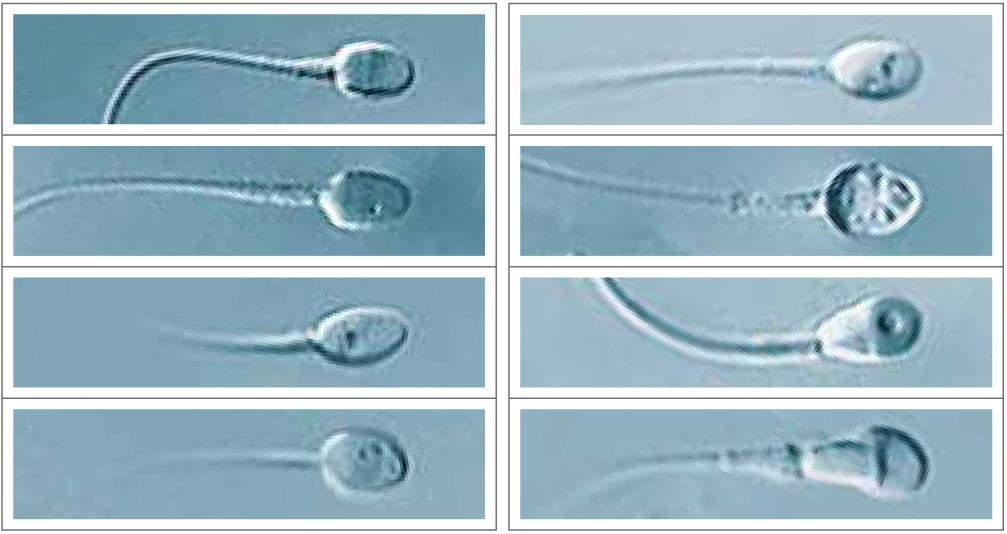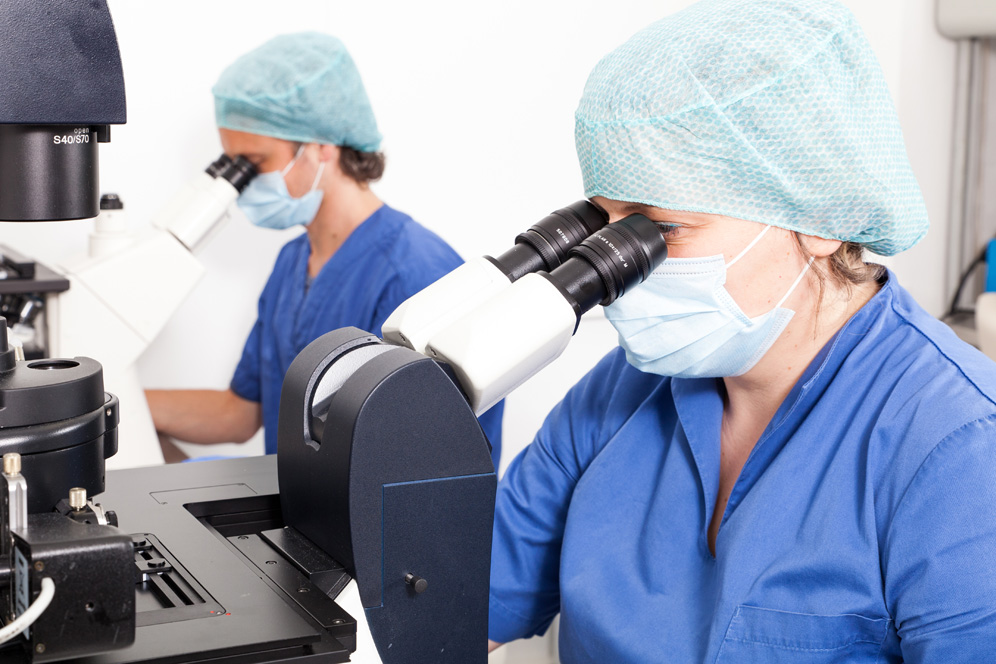Sperm Quality
Sperm Selection
Egg and sperm factors are equally important for the development of the embryo. This is why, in medically assisted procreation, special attention is paid to oocyte and sperm quality. When taking a closer look at the sperm factor, it becomes quite clear that assessing sperm morphology and selecting the best sperm for in vitro fertilization represent decisive steps in the process of realizing a couple's dream of having a child.
IMSI
The assessment of sperm quality can be further improved using advanced microscopy techniques such as, for example, "Intracytoplasmic Morphologically Selected Sperm Injection" (IMSI). Using a special microscope for high-resolution imaging, the spermatozoa are analyzed three-dimensionally in real time, i.e. "live" at a magnification of 6.000x - 12.000x. Of course, this allows for a more detailed analysis of the single sperm cells, enabling the selection of the best sperm for in vitro fertilization. Particular emphasis is placed here on sperm morphology (size, shape and structure).


"IMSI versus ICSI"
The causes for involuntary childlessness may vary greatly from one couple to another, thus requiring a highly individual approach. Therefore, the male factor is of increasing interest to the scientific community. Today, we know that sperm/semen are worth being looked at in more detail so that any dysfunctions can be detected. Oocyte fertilization, embryonic development and, possibly also the child's health may be affected by such disturbances.
When comparing fertility treatment paired with ICSI (Intracytoplasmic Sperm Injection) to treatment with IMSI, it emerges that the detailed analysis and selection of spermatozoa appear to reduce the risk of congenital malformations significantly. These findings of a recent study (Cassuto et al., 2014) could be confirmed by a multi-center study published in early 2018. Next Fertility IVF Prof. Zech, too, participated in this retrospective study. Scientifically sound studies - like the one previously quoted - also indicate that a connection exists between the use of intracytoplasmic morphologically selected sperm injection and improved outcomes in terms of the fertilization rate, the number of (top-) blastocysts on the fifth day of in-vitro culture and the pregnancy rate.
Longstanding experience
In 2005, we were the first worldwide to introduce IMSI as a standardized procedure into clinical practice at our IVF centers. This treatment method contributes to improving the chances of getting pregnant by selecting sperm with normal morphology to inseminate the eggs. In addition, we use the IMSI technology for a detailed investigation carried out as part of the semen analysis (spermiogram). Today, our team can draw on the know-how and expertise derived from more than 14 years of successful results achieved through the use of IVF therapies paired with IMSI.
Spermiogram
at the IVF Center
The spermiogram (semen analysis) makes it possible to get a detailed overview of a man's sperm quality and also plays an essential role both in therapy planning and during the treatment. At our IVF Centers, we offer purpose-designed analysis variants, involving molecular-biological detailed analyses of spermatozoa.
CONTACT



